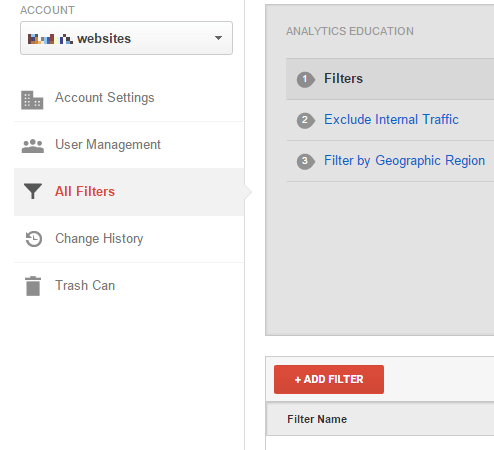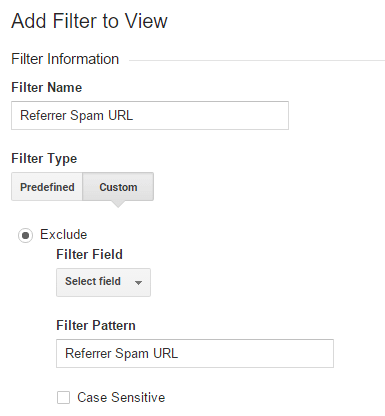The Lifehacĸer.com referral spam in Google Analytics is a new breed of problem. This page is dedicated to eradicating it from your GA statistics.
Lifehacĸer.com is one of the many forms of referral spam plaguing website owners across the globe. It’s a real nuisance and sometimes it can even grow into an actual problem. The bottom line with referral spam is: the quicker you act – the less damage it can cause. But it’s also important that you act in the correct way. We have dedicated this article to explaining exactly what Lifehacĸer.com is and how it affects you and your website. We have also included information regarding the proper course of action, necessary to successfully remove this issue and not make it worse. And last but not least, we’ve also provided our readers with a removal guide below, which will walk you through the process of blocking the spammers.
What is referral spam?
You may or may not be fully aware of what exactly it is you are faced with. Lifehacĸer.com is a form of referral spam, more often called ghost spam. This is to distinguish it from its older counterpart, the classic referral spam. The two have the same objective and go basically the same route to achieve it, save only for one small difference. Both types of spam are aimed at attracting traffic to the spammers’ website. This is done to boost them higher up in Google’s search results and increase their popularity. Pretty simple. Now, the way they strive to achieve that is by getting you and other website owners to come visit their site, by pretending to visit theirs. However, here is where they differ – in their means of accomplishing that. Allow us to illustrate:
In the case of classic referral spam, the spammers would send bots and crawlers to the targeted website, thus mimicking authentic visits. Normally, several of these visits will occur with no session time and this was to prompt the website owner to click back on this strange visitor and find out why the many visits with such a high bounce rate. So, in essence, the spammers will be after your visit to their site. If you can picture this on a more massive scale, where hundreds of thousands of sites are affected, that translates to a pretty solid flow of traffic. However, this method was soon rendered ineffective, because Google learned to block it (because of the bots), practically eradicating it. That’s where ghost spam like Lifehacĸer.com comes in. Here, the spammers decided to take a shortcut and skipped the whole crawler/bot thing. Instead, they went directly to the Google Analytics stats of the targeted website and started manipulating the data in them, so it would show visits from the spamming website. The visits would again be extremely short and fairly numerous, so the idea behind the whole practice is the same as with its predecessor.
Right and wrong counteraction
It’s fairly common that people will be misguided into taking the wrong actions against referral spammers. This comes from the misinterpretation of the purpose of a certain tool in GA: the Referral Exclusion list. Apparently because it includes the word ‘referral’, this list has been used time and time again to block referral spammers. This is not only ineffective, it is actually harmful to you. If you decide to enter Lifehacĸer.com into that list, Google Analytics will try to follow up on those non-existent visits you’ve been receiving and are now complaining about. So, as it will of course not be able to find a source, GA will simply mark the visits as real traffic. That is not something you would like to happen, as from now on these fake visits that were up until now only messing with your stats, will actually start affecting your traffic count. In this sense, no action would have been better, as ghost spam doesn’t really affect your site’s ranking or anything. All it does is give you an illusion of traffic from another site. Of course, the longer this problem remains unaddressed, the more inaccurate the data in your GA stats will become and you will be left with a very unrealistic idea of what it actually going on with your site. The right thing to do here would be to stick to the guide featured below and consider investing in better hosting. Better hosting will typically offer better spa-blocking mechanisms and filters, which is essentially the only somewhat reliable way of protecting yourself against referral spam.
Block Lifehacĸer.com Google Analytics Spam
STEP 1: In your Analytics account go to Admin —> All Filters.

STEP 2: Next, click New Filter and add Lifehacĸer.com in the Filter Name value.
STEP 3. Select the Custom Filter Type. In the Filter Field —> Campaign Source. In the Filter Pattern text box, add Lifehacĸer.com and click the Save button at the bottom of the webpage.

Blocking Lifehacĸer.com referrer spam through .htaccess
If you know how to access your .htaccess file, you just need to input the following code in there:
## SITE REFERRER BANNING
RewriteCond %{HTTP_REFERER} Lifehacĸer.com [NC,OR]
RewriteCond %{HTTP_REFERER} Lifehacĸer.com
RewriteRule .* - [F]
If you don’t know how to access it, do the following:
Login to your cPanel account —> File Manager —> click the check-box “Document Root for” —> your website. A side note: click on “Show hidden Files” and then Go. Find the .htacess file, right click it and choose Code Edit. Input the code I gave you and Save Changes.
Did we help you? A thank you in the comments goes a long way to warm our hearts!

Leave a Reply